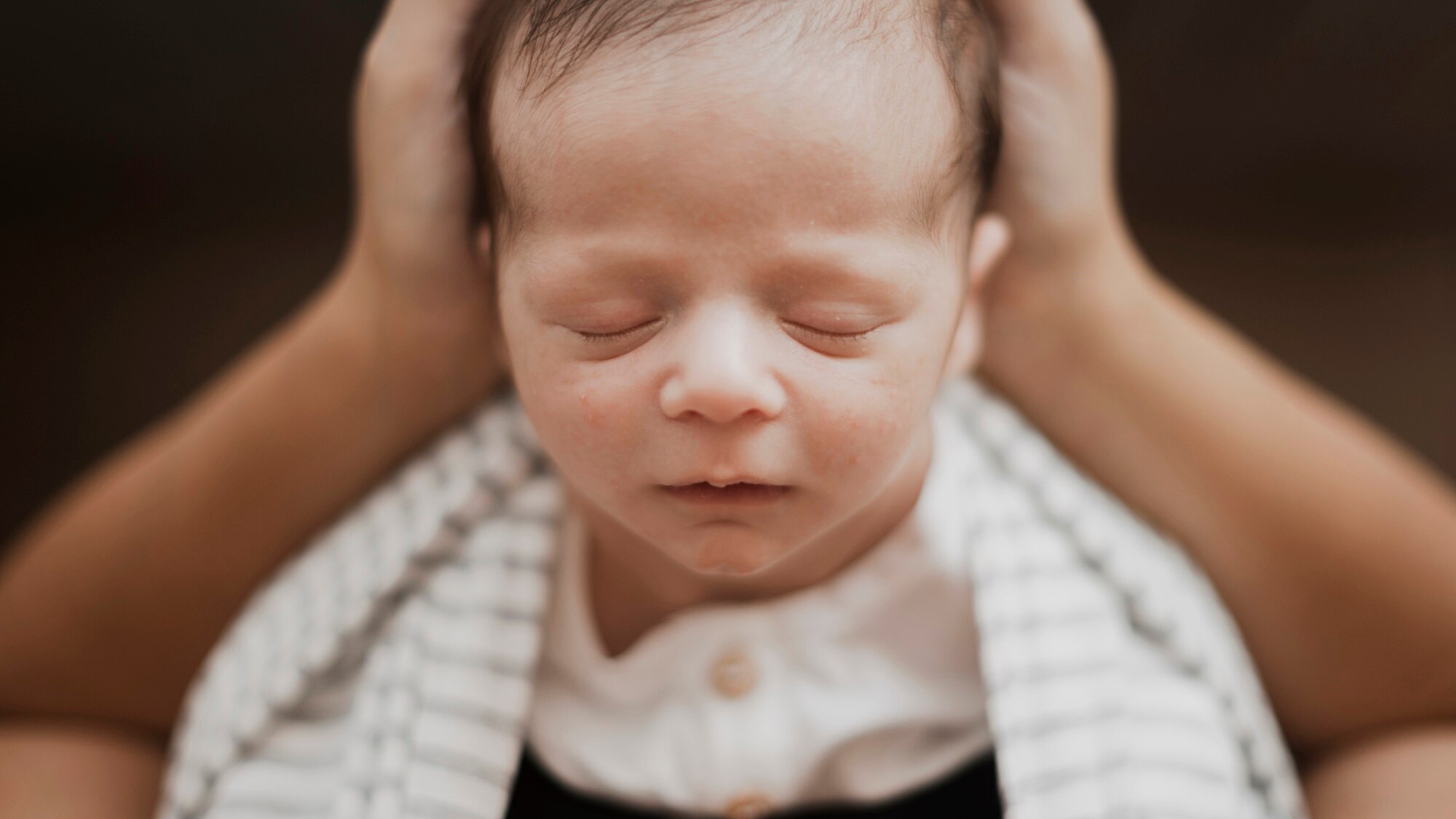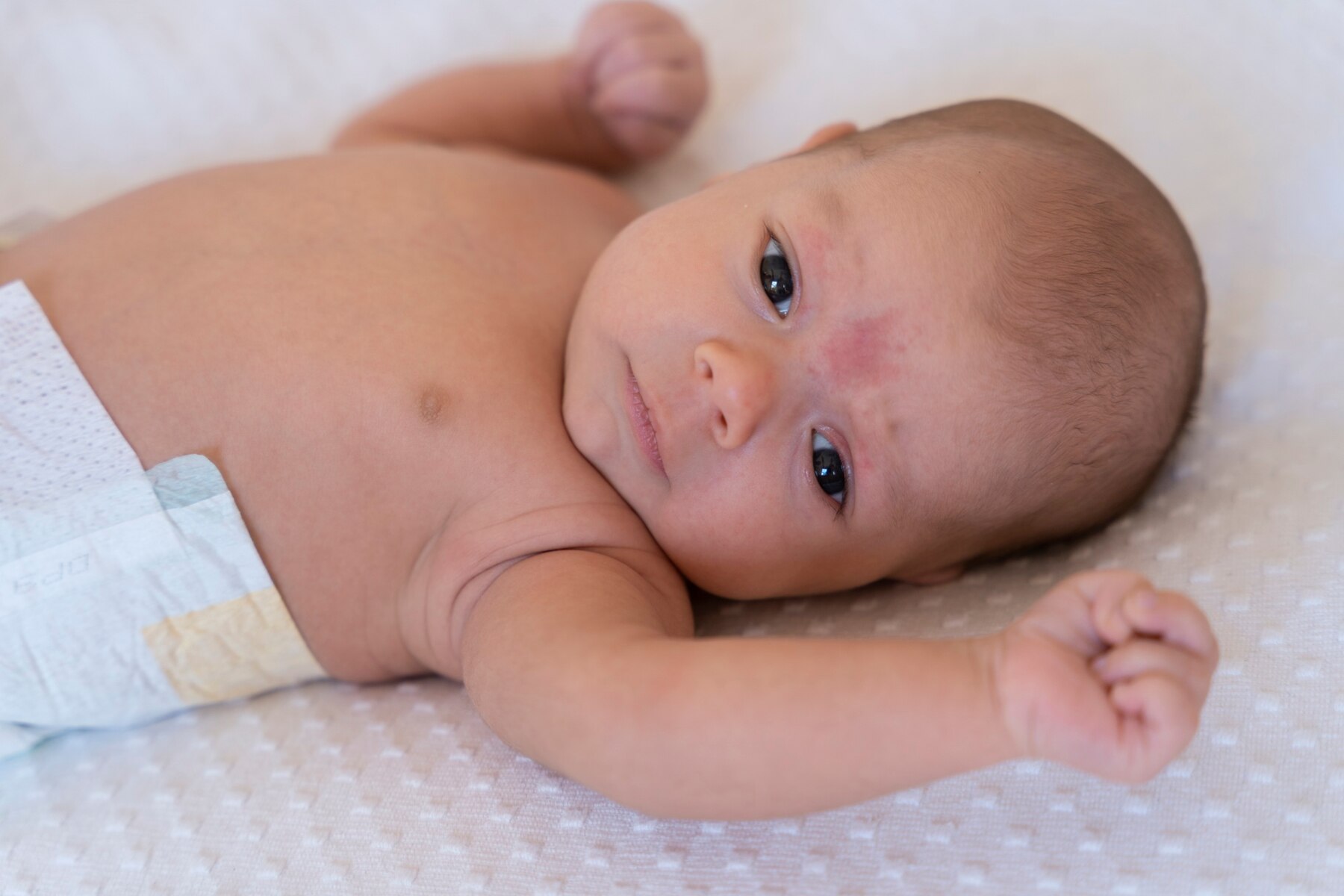Login
Signup
Epidermolysis Bullosa in newborn

Epidermolysis Bullosa in newborn: A Comprehensive Overview of Symptoms, Causes, Diagnosis, and Management of this Rare Disease
Epidermolysis bullosa (EB) is a group of rare genetic disorders that result in extremely fragile skin and the development of painful blisters. This condition usually appears in infants and young children and can range from mild to severe. In this article, we provide a comprehensive overview of the symptoms, causes, diagnostic methods, and available treatment options for EB in infants.
Symptoms of Epidermolysis Bullosa in Infants: Signs to Watch Out For
Infants with EB have extremely fragile skin that blisters easily. Even the slightest friction or impact can lead to the formation of painful blisters. These blisters may appear anywhere on the body, but are more commonly seen in pressure areas such as the hands, feet, elbows, and knees. In addition to skin blisters, infants with EB may also experience other problems, including:
- Nail problems: Nails may be thick or misshapen, or may even disappear.
- Mouth and throat problems: Blisters can form inside the mouth and throat, causing feeding and swallowing difficulties.
- Hair problems: Hair may be thin and brittle, or hair loss (alopecia) may occur.
Causes of Epidermolysis Bullosa: The Genetic Roots of this Disease
EB is a genetic disease caused by a defect in the genes responsible for producing the skin’s structural proteins. This disease can be inherited from parents (autosomal dominant or recessive inheritance). In fact, a defect in the structure of vital skin proteins, such as keratin or collagen, prevents the skin layers from properly connecting, making the skin extremely vulnerable and prone to blistering.
Diagnosing Epidermolysis Bullosa: How Can This Disease Be Identified?
EB diagnosis is usually based on clinical symptoms and family history. A dermatologist can suspect EB by carefully examining the infant’s skin and observing blisters and other symptoms. In some cases, a skin biopsy and genetic testing may also be performed to confirm the diagnosis and determine the exact type of EB. Genetic testing can help identify specific mutations in EB-related genes and provide valuable information about the severity of the disease and its prognosis.
Treating Epidermolysis Bullosa: Managing and Caring for Fragile Skin
Currently, there is no definitive cure for EB, and treatment focuses on caring for blisters and preventing the formation of new ones. This includes the following:
- Wound care: Proper cleaning and dressing of blisters to prevent infection and speed healing is of paramount importance. There are special dressings and specific techniques for caring for EB wounds that should be taught by a doctor or nurse.
- Blister prevention: Avoiding any friction or impact on the skin, wearing soft and loose clothing, and protecting the skin from heat and cold can help reduce the number and severity of blisters.
- Proper nutrition: Ensuring adequate intake of nutrients for wound healing and skin growth is essential. Infants with EB may need nutritional supplements due to feeding and swallowing problems.
- Pain management: Using pain relievers to reduce the pain caused by blisters can help improve the infant’s quality of life.
- Surgery: In severe cases, surgery may be performed to remove damaged tissue or repair deformities caused by EB.
Prognosis of Epidermolysis Bullosa: The Future Outlook for Affected Infants
The prognosis of EB depends on the severity of the disease. In mild cases, symptoms may improve with age, but in severe cases, the disease can lead to serious complications such as infection, malnutrition, permanent deformities, and even death. However, with proper care and management, many infants with EB can live relatively normal lives.
The Importance of Team Care and Family Support
Caring for infants with EB is crucial and requires a team approach involving dermatologists, pediatricians, surgeons, nutritionists, psychologists, and other specialists. It is also essential to support the families of these infants, as they face many challenges in caring for their child.
Caring for infants with epidermolysis bullosa (EB) not only requires medical knowledge and expertise, but also comes with high costs. These costs include the following:
- Medical expenses: Specialist visits, diagnostic tests, hospitalization, surgery (if needed), and medications.
- Home care expenses: Special dressings, medical equipment, private nurse (if needed), and other care supplies.
- Rehabilitation expenses: Physical therapy, occupational therapy, and speech therapy (if needed).
- Nutritional expenses: Nutritional supplements, special foods, and feeding equipment (if needed).
- Transportation expenses: Travel to and from medical and rehabilitation centers.
Due to the rarity of EB and the high cost of caring for these children, many families face serious financial problems. For this reason, financial assistance from various organizations and institutions can play an important role in improving the quality of life for these children and their families.
The Importance of Financial Assistance:
Your financial contributions can make a significant difference in the lives of children with EB and their families. These contributions can help cover the high costs of treatment and care, improve quality of life, and increase hope for the future of these children.
Let us remember that any financial assistance, no matter how small, can be valuable to these children and their families.
Financial assistance for children with epidermolysis bullosa (EB) is important in many ways and can have a profound impact on the lives of these children and their families. Here are some of these aspects:
- Providing for high treatment and care costs: EB is a rare and expensive disease. The costs associated with medications, special dressings, medical equipment, specialist visits, hospitalization, and surgery (if necessary) are very high, and many families cannot afford them. Financial assistance can help these families cover these costs and ensure their children have access to the necessary medical and care services.
- Improving quality of life: Children with EB face many challenges in their daily lives due to skin problems and chronic pain. Financial assistance can help improve the quality of life for these children. For example, they can have a more comfortable and active life by using appropriate medical equipment, soft and special clothing, and suitable toys.
- Reducing the financial burden on families: Caring for a child with EB places a heavy financial burden on families. Financial assistance can reduce this burden and help families face fewer financial problems and be able to attend to other aspects of their lives as well.
- Increasing hope for the future: Financial assistance can increase hope for the future for children with EB and their families. They feel that they are not alone and that there are people who care about them and help them in difficult situations.
Donating to support newborns with Epidermolysis Bullosa (EB) can make a profound difference in their lives and the lives of their families. Your financial contributions can be used to provide specialized clothing and bandages, pain relief medication, medical equipment and physiotherapy, as well as psychological support and counseling. By donating, you can bring hope and comfort to these courageous children and their families, and accompany them on their journey to fight this rare disease.

